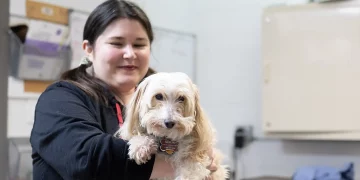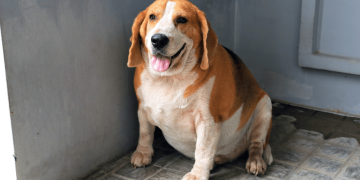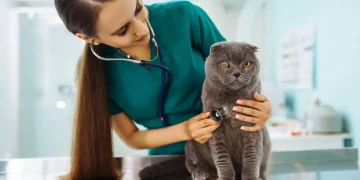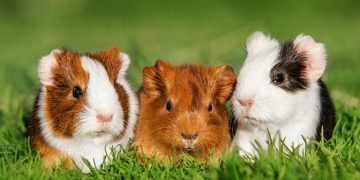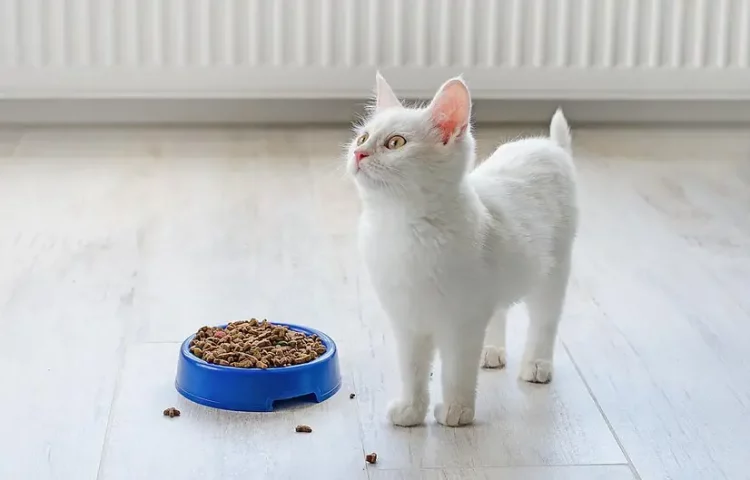Introduction:
As a cat owner, it can be concerning when your feline friend shows signs of discomfort or illness. One common issue that cats face, often overlooked or misdiagnosed, is food allergies. Much like humans, cats can develop sensitivities or allergies to certain ingredients in their diet, which can lead to various health problems. Recognizing the signs of food allergies in cats is crucial for their well-being, as prompt action can help prevent more severe health issues. This article will explore the signs of food allergies in cats, the science behind these allergies, and how owners can appropriately respond to manage their cat’s condition.
1. What Are Food Allergies in Cats?
A food allergy in cats occurs when their immune system reacts abnormally to certain proteins or ingredients in their food. Unlike food intolerance, which is often a digestive issue, a true food allergy involves the immune system’s response to a specific substance, often leading to inflammation or other allergic reactions.
Food allergies in cats are typically triggered by proteins such as beef, chicken, fish, or dairy, but cats can also develop sensitivities to other ingredients like grains or artificial additives.
2. Common Signs of Food Allergies in Cats
Identifying food allergies in cats can be challenging, as the symptoms often overlap with other health conditions. However, there are specific signs that may indicate a food allergy. If your cat exhibits any of the following symptoms after eating, they could be allergic to something in their diet:
a. Skin Issues
One of the most common signs of food allergies in cats is skin irritation. These issues can manifest as:
- Itchy skin or excessive scratching: Your cat may scratch, lick, or bite at certain areas of their body, particularly their paws, face, or belly.
- Red, inflamed skin: Allergic reactions can cause areas of redness or inflammation, especially around the ears, paws, or face.
- Hair loss: Persistent itching or licking can lead to hair thinning or bald patches in your cat’s fur.
- Hot spots: These are localized areas of inflammation and infection caused by excessive licking or scratching.
b. Gastrointestinal Symptoms
Food allergies often affect a cat’s digestive system as well. Common gastrointestinal signs include:
- Vomiting: Recurrent vomiting after eating could indicate that the food isn’t agreeing with your cat.
- Diarrhea: Food allergies can cause loose stools, and sometimes even bloody diarrhea.
- Flatulence or bloating: Excess gas, along with discomfort or a bloated abdomen, might indicate an allergic reaction.
- Loss of appetite: If your cat suddenly stops eating or seems to have a reduced interest in food, it may be due to an allergy.
c. Respiratory Issues
Though rarer, food allergies can also manifest in respiratory symptoms, such as:
- Sneezing or coughing
- Watery eyes or nasal discharge
- Excessive drooling or difficulty swallowing
These symptoms may also be associated with respiratory infections, so it’s important to consult a vet for a proper diagnosis.
3. What Causes Food Allergies in Cats?
The exact cause of food allergies in cats is not always clear, but there are some factors that contribute to the development of these sensitivities:
- Immune System Response: The immune system mistakenly identifies harmless proteins (such as those in certain meats or grains) as harmful and begins to attack them, leading to allergic reactions.
- Genetics: Some breeds are more predisposed to food allergies than others. For example, Siamese cats and other oriental breeds may be at higher risk.
- Exposure to New Ingredients: Cats that have been eating the same food for an extended period of time may develop allergies after being exposed to new proteins or ingredients.
- Processing of Food: The way food is processed may also impact its allergenic potential. Some preservatives, artificial colors, or additives can trigger allergic reactions in sensitive cats.

4. How Can You Confirm if Your Cat Has a Food Allergy?
Diagnosing food allergies in cats typically requires a systematic approach, as there are no simple tests for food allergies like there are for environmental allergies. The process generally involves:
a. Elimination Diet
The most reliable method for diagnosing food allergies is an elimination diet. This involves feeding your cat a limited ingredient diet with a novel protein (one they haven’t eaten before) for several weeks, while completely avoiding their previous food.
- Novel Proteins: Commonly used novel proteins include rabbit, venison, or duck.
- Limited Ingredients: Some brands offer specially formulated diets with a single protein and carbohydrate source to minimize allergens.
- Duration: The elimination diet should last for 8 to 12 weeks to effectively determine if the allergy symptoms improve.
After the elimination period, you can gradually reintroduce ingredients to identify the specific allergen. If symptoms return after reintroducing a certain ingredient, it’s likely that your cat has an allergy to that food.
b. Veterinary Testing
Although there are no standard blood tests to diagnose food allergies in cats, a veterinarian may recommend additional tests to rule out other conditions. In some cases, they may perform allergy testing for environmental allergies or conduct stool tests to check for gastrointestinal infections or parasites.
5. How to Respond to a Food Allergy in Your Cat
If you suspect that your cat has a food allergy, it’s important to take a scientific and measured approach to managing the condition. Here’s how you can respond effectively:
a. Consult Your Veterinarian
The first step is to schedule a visit to the vet. A vet will help rule out other health issues and guide you through the elimination diet process. Never attempt to diagnose or treat a food allergy without professional guidance, as improper handling can worsen the situation or mask other underlying conditions.
b. Switch to a Hypoallergenic Diet
Once your cat’s allergy has been identified, your vet will likely recommend a hypoallergenic or limited ingredient diet. These diets are specially formulated to minimize allergens and are designed to support your cat’s digestive health.
- Hypoallergenic foods: Some brands offer food made with hydrolyzed proteins, where the proteins are broken down into smaller components to reduce the likelihood of an allergic reaction.
- Avoid common allergens: If your cat is allergic to common ingredients such as chicken or beef, look for foods that contain alternative proteins like turkey, venison, or fish.
c. Home-Cooked Diets or Raw Food
In some cases, pet owners choose to prepare home-cooked meals or feed their cats raw food as a way to avoid allergens present in commercial pet food. However, it’s crucial to ensure that these diets are balanced and nutritionally complete. Working with a veterinary nutritionist is recommended to ensure your cat’s food meets all of its dietary requirements.
d. Monitor and Adjust
Once your cat is on a new diet, monitor their symptoms closely. If you notice improvement after a few weeks, this is a good indication that the new diet is working. However, if symptoms persist, it may be necessary to adjust the food again or conduct further testing to identify other allergens.
e. Avoid Treats and Table Scraps
During the elimination diet, be sure to avoid giving your cat treats or table scraps, as these can contain hidden allergens. Stick to the prescribed diet for the best results.
6. Conclusion
Food allergies can cause significant discomfort for cats, and as a responsible pet owner, it’s essential to recognize the signs early and seek professional help. If your cat shows any signs of food allergies, an elimination diet is typically the most effective way to identify the culprit. With the right approach, including a proper diagnosis, diet adjustments, and ongoing monitoring, your cat can live a healthy and allergy-free life.
Remember, always consult with your veterinarian before making any significant dietary changes to ensure that your cat’s nutritional needs are met, and their allergies are properly managed.













